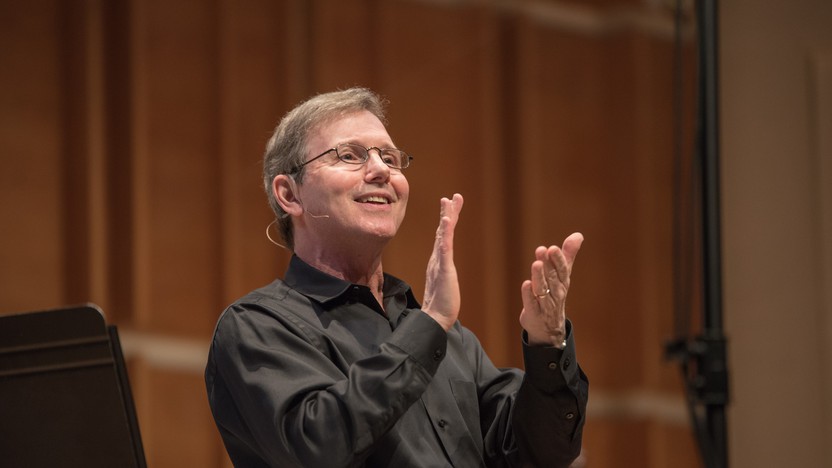Haydn’s Salomon Symphony: What Makes It Great?® with Rob Kapilow




During his long tenure with the Esterházy family, Franz Joseph Haydn spent much of his time dutifully entertaining his patrons at a remote country estate. He encountered a vastly different environment during his two visits in the 1790s to London, a bustling city that welcomed him as a celebrity. London audiences loved a spectacle, and Haydn catered to their tastes in his second set of “London” symphonies by writing music with extra panache. He added the robust tone of clarinets in all but one symphony, and he incorporated flashy gestures that inspired nicknames still associated with several works: Military (Symphony No. 100), The Clock (Symphony No. 101) and Drum Roll (Symphony No. 103).
There is no particular reason why, out of the 12 symphonies written for London, the No. 104 should be called Salomon — a tribute to the impresario who brought Haydn to London, and who directed the orchestra from the violin — but nevertheless the name has stuck. Haydn debuted it at a benefit concert in London on May 4, 1795, and as he noted in his diary, “The whole company was thoroughly pleased and so was I. I made 4000 gulden on this evening: such a thing is possible only in England.”
The symphony’s slow introduction (a hallmark of Haydn’s late symphonies) begins dramatically in D-minor, with a fortissimo proclamation that leaps up and then down. The fast body of the movement dispels the tension with a gentle, balanced melody in the symphony’s true home key of D-major, and the same theme returns to define a contrasting key, an old trick of Haydn’s that creates a climate in which every gesture retains a sense of organic connection and interrelatedness.
The Andante movement introduces a sweet and deceptively simple theme, graced with a bit of Haydn’s typical playfulness in the accented off-beats and a few foreign notes. The music meanders through keys near and far, stretches and pauses at whim to delight in particular sonorities, and flexes its muscles a few times in the course of its relaxed stroll. The Menuetto is a courtly dance number, but — as in any Haydn minuet — a little mischief is to be expected, as in the jolting pause of two full measures. The Allegro spiritoso finale begins with a rustic melody over a held drone, a tune that has been identified as a Croatian folk song, “Oj, Jelena,” which Haydn may have picked up from his time at his employer’s eastern outpost.
Aaron Grad ©2024
Get driving directions and find nearby parking.
Find dining options close to the venue.
View seating charts to find out where you'll be seating.
SPCO concerts are made possible by audience contributions.
For exclusive discounts, behind-the-scenes info, and more:
Sign up for our email club!
